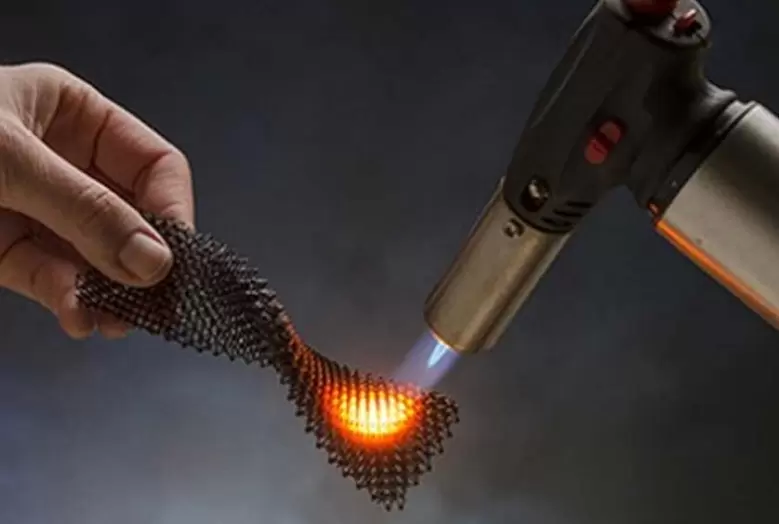Metal additive manufacturing 3D printing is a highly innovative technology that has revolutionized the manufacturing industry. This article provides detailed information on the various techniques and processes used in metal 3D printing, the types of metal powders used, its applications in industry, and the advantages of using metal additive manufacturing.
Table of Contents:
I. Introduction: Metal Additive Manufacturing 3D Printing
II. Metal Additive Manufacturing Techniques
a. Powder Bed Fusion (PBF)
b. Directed Energy Deposition (DED)
c. Binder Jetting (BJ)
III. Types of Metal Powders Used in 3D Printing
a. Titanium Powder
b. Stainless Steel Powder
c. Cobalt Chromium Powder
d. Aluminum Powder
IV. Making Metal Powder for 3D Printing
a. Atomization
b. Electrolysis
c. Chemical Reduction
V. Difference Between Additive Manufacturing and 3D Printing
VI. Advantages of Metal Additive Manufacturing
VII. Applications of Metal 3D Printing in Industry
VIII. Conclusion
I. Introduction: Metal Additive Manufacturing 3D Printing
Metal additive manufacturing 3D printing is a process of creating three-dimensional objects by adding layers of metal powder and using heat or high-powered lasers to bond the layers together. This technology is also called metal 3D printing, and it has become a game-changer in the world of manufacturing, allowing for the production of complex geometries and designs not achievable with traditional manufacturing techniques.
II. Metal Additive Manufacturing Techniques
There are three primary metal additive manufacturing techniques: Powder Bed Fusion (PBF), Directed Energy Deposition (DED), and Binder Jetting (BJ). PBF and DED are the two primary metal 3D printing techniques used in industry.
a. Powder Bed Fusion (PBF)
Powder Bed Fusion (PBF) is a process of fusing metal powder by using high-powered lasers to melt the powder and create a solid part. PBF can be further divided into two technologies: Selective Laser Melting (SLM) and Electron Beam Melting (EBM).
b. Directed Energy Deposition (DED)
Directed Energy Deposition (DED) uses a high-powered laser or electron beam to create melted metal that is then directly deposited onto a part. DED can be divided into two technologies: Laser Metal Deposition (LMD) and Electron Beam Welding (EBW).
c. Binder Jetting (BJ)
Binder Jetting (BJ) creates a part by layering metal powder with a binder material that forms a solid object. The binder material holds the metal powder together until it is melted together to create a solid part.
III. Types of Metal Powders Used in 3D Printing
Different types of metal powders are used in 3D printing, including titanium powder, stainless steel powder, cobalt chromium powder, aluminum powder, and more.
a. Titanium Powder
Titanium powder is used to produce parts with excellent strength and excellent corrosion resistance, making it suitable for medical implants and aerospace applications.
b. Stainless Steel Powder
Stainless steel powder is used to create parts with high temperature and corrosion resistance, making it suitable for industrial and manufacturing applications.
c. Cobalt Chromium Powder
Cobalt chromium powder is used to produce parts with high tensile strength and good corrosion resistance, making it suitable for dental and medical implant applications.
d. Aluminum Powder
Aluminum powder is used to create parts with a high strength-to-weight ratio, making it suitable for aerospace and automotive applications.
IV. Making Metal Powder for 3D Printing
Making metal powder for 3D printing involves several processes, including atomization, electrolysis, and chemical reduction.
a. Atomization
Atomization is a process that involves melting a metal and then spreading it out over a large surface to solidify and form small particles.
b. Electrolysis
Electrolysis involves passing an electric current through a metal salt solution to create pure metal powders.
c. Chemical Reduction
Chemical reduction involves using chemicals to reduce the metal components into their pure forms, producing high-purity metal powders.
V. Difference Between Additive Manufacturing and 3D Printing
The terms “additive manufacturing” and “3D printing” are frequently used interchangeably. However, they are not the same thing. Additive manufacturing is a broad term that refers to the process of creating three-dimensional objects by adding material layer by layer. 3D printing, on the other hand, is a subcategory of additive manufacturing that involves printing three-dimensional objects using a 3D printer.
VI. Advantages of Metal Additive Manufacturing
The advantages of metal additive manufacturing are numerous, including the ability to produce complex geometries and intricate designs not achievable with traditional manufacturing techniques, the reduction of waste production, and the ability to customize parts according to specific requirements . Furthermore, 3D printing allows for the production of parts with high strength-to-weight ratios, reducing overall weight and cost. Additionally, 3D printing allows for rapid prototyping, reducing the time and cost of product development.
VII. Applications of Metal 3D Printing in Industry
The applications of metal 3D printing in industry are vast and diverse. One significant application is in the aerospace industry, where 3D printing allows for the production of lightweight parts that reduce fuel consumption, lower emissions, and provide a more efficient aircraft. The medical industry also uses 3D printing to produce customized implants that fit a patient’s specific anatomy, leading to faster healing and better outcomes.
Another critical application area is in the automotive industry, where 3D printing enables the production of customized parts and the creation of complex geometries that are not achievable with traditional manufacturing methods. The oil and gas industry uses 3D printing to create parts for tough operating conditions were traditional manufacturing processes fail to provide adequate solutions.
Additionally, 3D printing is used in the jewelry industry to create bespoke pieces and unique designs, while the architecture and construction industries use this technology to produce scale models and full-scale building components.
VIII. Conclusion
Metal additive manufacturing 3D printing is a highly innovative technology that offers numerous advantages, including rapid prototyping, customized products, complex geometries, and reduced waste production. The applications of metal 3D printing in industry are vast and diverse, with aerospace, automotive, medical, and other industries benefiting from this technology. By understanding the different techniques and processes involved in metal additive manufacturing 3D printing, we can unlock the full potential of this technology and continue to advance manufacturing capabilities and efficiency.




